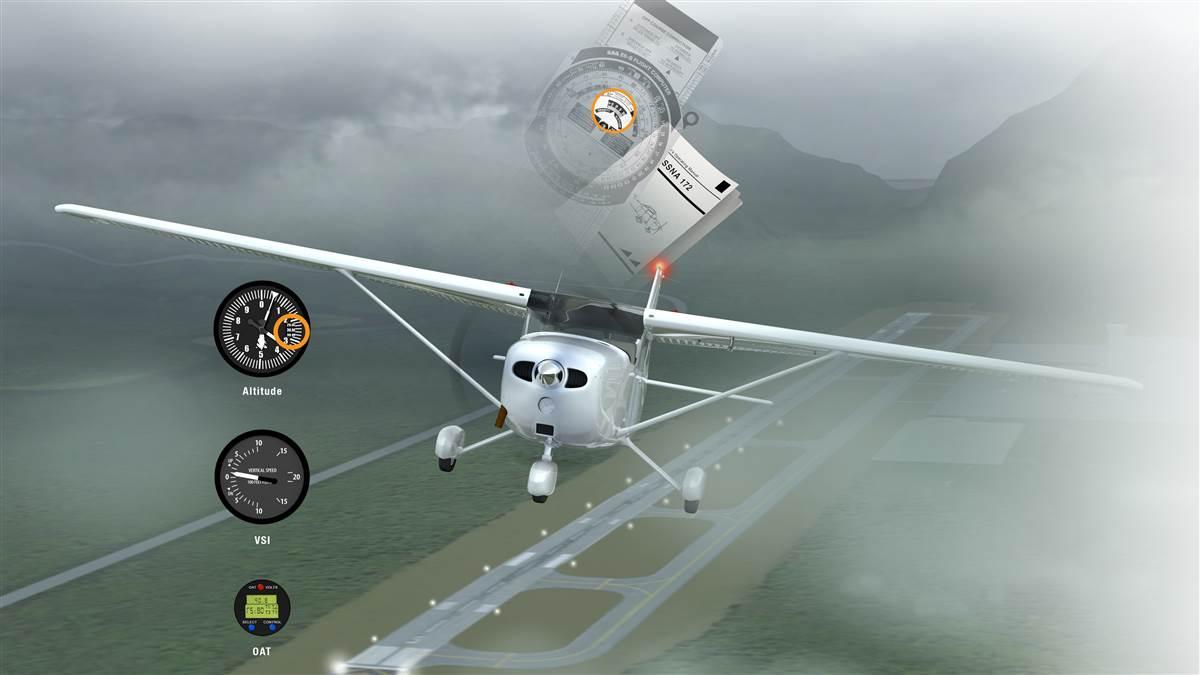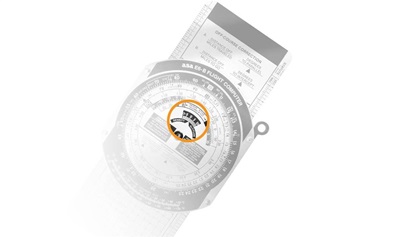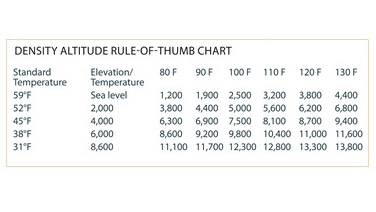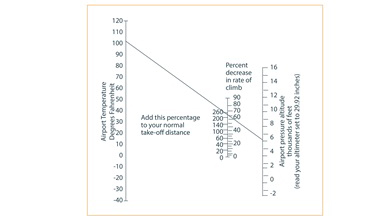Technique - Density altitude
When temperature and altitude go up, performance goes down

Since aircraft engines combine air and fuel in their pursuit of power, air with lower density leads to less power. Airfoils also use air pressure for lift, so wings and propellers don’t work as well with air that is less dense. The result is that as temperature and altitude increase, performance decreases—sometimes at an alarming rate. Density altitude accounts for these factors and establishes a theoretical altitude at which the airplane performs. Here are a few ways to calculate it.
Mathematically
Density altitude = pressure altitude + 120 X ([current temperature in degrees Celcius -standard temperature]) Assume a pressure altitude of 3,000 feet and a temperature of
30 degrees Celsius
3,000 + (120 X [30-9])
3,000 + (120 X 21)
3,000 + 2,520
Density altitude = 5,520
 E6B
E6B
An E6B can used to calculate many difficult parameters, but calculating density altitude isn't complicated. Simply slide the pressure altitude under the temperature in the left window and read density altitude off the center window.
 Reference table
Reference table
The FAA publishes a useful reference that gives general guidelines.
Koch chart
 This handy chart will require a straight edge. Connect the current temperature with the pressure altitude. Then read off where the line intersects the interior graph. Take the left number and increase your takeoff distance by that percentage. Increase your climb rate by the right number.
This handy chart will require a straight edge. Connect the current temperature with the pressure altitude. Then read off where the line intersects the interior graph. Take the left number and increase your takeoff distance by that percentage. Increase your climb rate by the right number.
Pilot’s operating handbook chart
Most POHs have takeoff distance charts that account for density altitude. By calculating the distance at a particular elevation for a specific temperature, you are automatically figuring out your aircraft’s expected performance.



